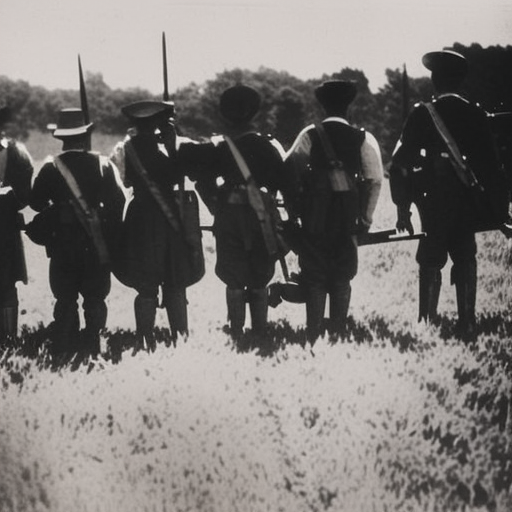Battle of Antietam: A Pivotal Moment in the American Civil War
The Battle of Antietam, also known as the Battle of Sharpsburg, took place on September 17, 1862, near Sharpsburg, Maryland. It was a significant engagement in the American Civil War and marked a turning point in the conflict. The battle was fought between the Confederate Army of Northern Virginia, commanded by General Robert E. Lee, and the Union Army of the Potomac, led by General George B. McClellan.
Background:
By the summer of 1862, the Civil War had been raging for over a year. The Confederate Army had achieved several victories, and General Lee decided to take the war north into Union territory. His objective was to win a decisive victory on northern soil, which could potentially lead to European recognition of the Confederacy and demoralize the Union.
Opening Moves:
On September 17, 1862, Lee’s army crossed the Potomac River and entered Maryland. McClellan, having intercepted Lee’s plans, pursued the Confederate forces. The two armies clashed near Antietam Creek, with the Union forces attacking the Confederate left flank.
The Battle:
The Battle of Antietam was a brutal and bloody affair. The fighting began at dawn and continued throughout the day. Both sides suffered heavy casualties, with over 23,000 soldiers killed, wounded, or missing by the end of the battle. The Union Army had around 87,000 troops engaged, while the Confederate Army had approximately 45,000.
Bloody Cornfield and Sunken Road:
Some of the fiercest fighting occurred in the Cornfield and the Sunken Road. The Cornfield changed hands multiple times, with both sides sustaining heavy losses. The Sunken Road, also known as Bloody Lane, became a killing ground as Union soldiers repeatedly charged the Confederate position. The fighting was intense, and the road was littered with bodies by the end of the day.
Burnside’s Bridge:
Another crucial part of the battle was the fight for Burnside’s Bridge. Union General Ambrose Burnside led his troops in a series of unsuccessful attempts to capture the bridge, resulting in heavy casualties. It was only late in the day that the Union forces managed to secure the bridge and push the Confederates back.
Outcome:
Despite the high casualties, the Battle of Antietam was a strategic victory for the Union. Lee’s invasion of the North was halted, and his forces were forced to retreat back across the Potomac River. The battle also provided President Abraham Lincoln with the opportunity to issue the Emancipation Proclamation, which declared that all slaves in Confederate-held territory were to be freed.
Significance:
The Battle of Antietam had several significant consequences. It boosted Union morale and gave President Lincoln the confidence to issue the Emancipation Proclamation, which shifted the focus of the war from preserving the Union to ending slavery. The battle also prevented European recognition of the Confederacy, as European powers were hesitant to support a nation that condoned slavery.
Legacy:
The Battle of Antietam remains the single bloodiest day in American military history, with more casualties than any other battle. It highlighted the devastating toll of the Civil War and the need for a resolution. The battle also demonstrated the resilience and determination of both Union and Confederate soldiers.
In conclusion, the Battle of Antietam was a pivotal moment in the American Civil War. It halted Lee’s invasion of the North, boosted Union morale, and provided President Lincoln with the opportunity to issue the Emancipation Proclamation. The battle’s significance extended beyond the battlefield, as it shifted the focus of the war and prevented European recognition of the Confederacy. The legacy of the Battle of Antietam serves as a reminder of the sacrifices made during the Civil War and the ongoing struggle for freedom and equality in the United States.












